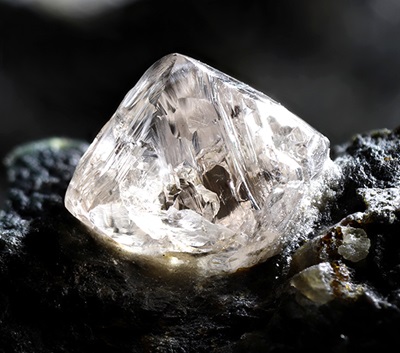| Identification | Back Directory | [Name]
DIAMOND NATURAL MONOCRYSTALLINE POWD& | [CAS]
7782-40-3 | [Synonyms]
adamas
adamant
Diamant
Carbon(cf8)
Chebi:33417
Nanodiamond
DIAMOND POWDER
Synthetic rutile
artificialdiamond
Diamond,industrial
DIAMOND, NANOPOWDER, 95+%
MM diamond(man-made diamond)
Nanodiamond (Amine-modified)
Nanodiamond (Carboxyl-modified)
Diamond nanoparticles suspension
NanodiaMond (particle size : <10nM)
Diamond monocrystalline powder, ~1 mum
DIAMOND, NANOPOWDER, 97+% METALS BASIS
DIAMOND SYNTHETIC MONOCRYSTALLINE PO&
DIAMOND NATURAL MONOCRYSTALLINE POWD&
Diamond synthetic polycrystalline powder, ~1 mum
Diamond synthetic monocrystalline powder, <=1 mum
DIAMOND, NATURAL, MONOCRYSTALLINE, POWDE R, CA. 1 MICRON, 99.9%
DIAMOND, SYNTHETIC, POLYCRYSTALLINE, POW DER, CA. 1 MICRON, 99.9%
DIAMOND, SYNTHETIC, MONOCRYSTALLINE, POW DER, CA. 1 MICRON, 99.9%
DiaMond nanopowder, <10 nM particle size (TEM), >=97% trace Metals basis | [EINECS(EC#)]
231-953-2 | [Molecular Formula]
C | [MDL Number]
MFCD00211867 | [MOL File]
7782-40-3.mol | [Molecular Weight]
12.01 |
| Chemical Properties | Back Directory | [Appearance]
very hard crystals or light green powder | [Melting point ]
4440°C | [Boiling point ]
4827℃ [COT88] | [bulk density]
0.2-0.7g/mL | [density ]
3.5 g/mL at 25 °C(lit.)
| [refractive index ]
nD20 2.4173 | [solubility ]
insoluble in H2O | [form ]
synthetic polycrystalline powder
| [color ]
Clear, Impurities (i.e. Nitrogen) and irradiation can change color to yellow, green, blue, pink, or brown. | [Stability:]
Stable. | [Crystal Structure]
Cubic, Diamond - Space Group Fd3m | [Merck ]
13,3007 | [EPA Substance Registry System]
Diamond (7782-40-3) |
| Hazard Information | Back Directory | [Chemical Properties]
very hard crystals or light green powder | [Definition]
ChEBI: An allotropic form of the element carbon with cubic structure which is thermodynamically stable at pressures above 6 GPa at room temperature and metastable at atmospheric pressure. At low pressures diamond converts rapidly to graphite at temperatures above
1900 K in an inert atmosphere. The chemical bonding between the carbon atoms is covalent with sp3 hybridization. | [Uses]
Jewelry. Polishing, grinding, cutting glass, bearings for delicate instruments; manufacture of dies for tungsten wire and similar hard wires; making styli for recorder heads, long-lasting phonograph needles. In semiconductor research. | [Physical properties]
Exists in two major varieties:
those bearing nitrogen as an
impurity (Type I) and those
without nitrogen (Type II).
These two subgroups are further
subdivided into Types Ia, Ib, IIa,
and IIb. Type Ia diamonds are
the most common type of
naturally occurring diamond;
they exhibit 0.1 to 0.2 wt.%
nitrogen present in small
aggregates, including platelets.
By contrast, nitrogen in Type Ib
diamonds is dispersed
substitutionally. Of the two
Type II diamond types, Type IIb
is a semiconductor due to
minute amounts of boron
impurities and exhibits a blue
color, whereas Type IIa
diamonds are comparatively
pure. Electric insulator
(E = 7 eV.). Burns in oxygen. | [General Description]
Diamond nanopowder (DNPs) may be produced by multicathode direct current plasma chemical vapor deposition and high pressure high temperature (HPHT).
Potential uses of nano-diamond are in biosensor applications. Surface modification of nano-diamond may enhance its linking mechanism with specific biomolecules. DNPs can be subjected to functionalization post Fenton treatment. These functionalized DNPs may be used as gene delivery systems. | [Structure and conformation]
Diamond crystallographic structure consists to a face centered cubic crystal lattice where the carbon atoms occupy the eight corners, the centers of the six faces and half of the tetrahedral crystallographic sites (Z = 8). The most common crystal habits for euhedral crystals found in nature are the octahedron {111}, the cube {100}, and the dodecahedron {110} sometimes rounded due to etching. Diamond normally cleaves on the (111) plane but cleavage has been observed on the (110) plane and to a lesser extent some other crystallographic planes.
|
|
|